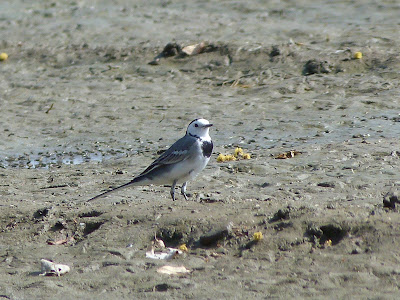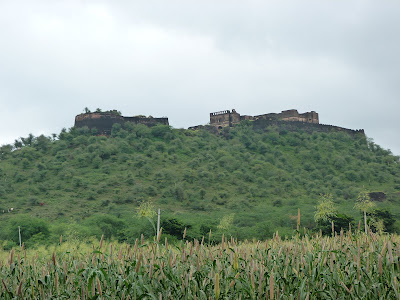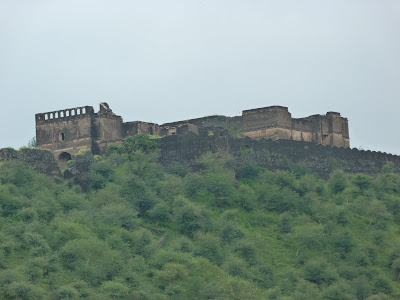This here is a tale of two different types of trees, quite unrelated to each other, and growing in contrastingly different terrain separated by thousands of kilometers. Yet there are similarities, and as you dig deeper, the stories, the science, the myths that surround them curiously echo related themes.
Now, what has any of this got to do with Birding, you may ask, which is what this Blog is supposed to be all about. The honest answer is, not much really. But then the author may be allowed to digress a little, to try and hone his craft, so to speak ! And if you are patient enough to read through till the end of this post, I hope that you will agree that in the larger scheme of things, the natural world is composed of these finely interwoven silken threads, and (not to sound preaching) even an inadvertent severing of one of these linkages could lead to a much larger domino- type effect in the ecosystem.
Our story starts with Chocolate. Who doesn't like chocolate ? I certainly do, like a vast majority of people. But when stories started appearing in the Press some years ago, that chocolate will soon inevitably become as scarce ( and as expensive) as caviar; at first this appeared to be just alarmist. Something on the lines of - 'a large meteor will strike Earth in 2012'. Yeah, while you're holding your breath buddy, can I have your share of the Hershey's bars too. But the stories had a nasty habit of recurring, like a bad dream. And so, you have to figure out what these Cassandras are talking about.
Now we all know that chocolate is produced from Cocoa beans. These Cacao beans ( more correctly) come from pods which hang pendulously from the trunks of Cacao trees - Theobroma cacao ( meaning - "food of the gods, chocolate"). We understand that a large percentage of the world's harvest of cacao beans are now farmed in tropical rainforests of two fairly small African countries - Ivory Coast and Ghana. Over the years, it appears that the yield from these plantations is steadily decreasing. There are many reasons for this. Many experts believe that this trend is irreversible and hence the alarm. As you dig deeper you unearth fascinating facts - curiously many of these will have echoes in the latter half of our story about an Asian tree. And the central character in each of the stories is a tiny insect !
But wait a minute, didn't Cacao originate not from Africa but from the Americas ? Yes indeed. The ancient Mayans were amongst the first to concoct a drink from Cacao beans. It was used ceremonially in rituals, though the elite regarded it as an aphrodisiac. Truly 'food of the Gods'. Later the Aztecs treasured the beans, and these were even used as currency. The Spanish Conquistadors were instrumental in taking it back to Europe, from where it spread around the world. One of my favourite Neil Young songs 'Cortez the killer' goes like this about Cortez storming the Aztecs with his Spanish Armada ... " he came dancin' across the water, with his galleons and guns ..." and of the Aztec Emperor ... " on the shore lay Montezuma, with his cocoa beans and pearls.." But what is it about cacao cultivation and the beans that the Aztecs treasured it at least as much as their Gold ?
For that we need to examine the Cacao tree. And try and understand just why it is devilishly difficult to farm the pods (which contain the beans) in plantations. The tree in the wild is a rainforest understory tree and grows and fruits best when many factors come together with the soil, rainfall, etc. The fruits and flowers appear directly on the trunk, both at the same time. Now here's the thing. The flowers only have a brief window of pollination. And the pollination is only achieved by a particular species of midges (small flies to you and me). Even then only a very small fraction of flowers are actually pollinated. The fruit pod that then does develop takes many months to mature. This is all very well when you are talking of a few Mayans tending to some trees in their backyards. Today the demands of the chocolate industry (to satisfy the cravings of billions around the world), have resulted in huge cacao plantations, as in Africa. But the problem is that the midges are not exactly following the script. For a moment, picture yourself as this super-specialist insect. Over millenia he has evolved to do a job. That is to pollinate the flowers of the Cacao tree. He is perfectly happy to do this swarming with his ilk deep in the rainforest in his preferred habitat. But he now has to be persuaded to do the same job in these immense 'artificial' plantations quite far from home. Adding to the confusion, Cacao flowers in plantations also do not have the same complex smells as wild ones do, futher perplexing the midges. Quite simply, a beleagured insect means less pollination = fewer pods or beans = chocolate crisis.
We now shift our interest half-way around the world - to India. You may occasionally see an expectant person standing under a Ficus racemosa or Goolar Tree, peering intently at the marble-sized fruits that grow directly from the trunk. Interestingly, the urban legend is that if one sees flowers on a Goolar, one will be showered with riches. Now the Ficus Racemosa is quite widely dispersed around Asia and even Australia. While it is not as venerated and not as easily recognized as two of its cousins the Ficus religiosa (Peepul) and the Ficus benghalensis ( Banyan), it certainly is of interest to our story.
The Goolar is referred to as 'Udumbara' in Buddhist scriptures. This was a mythical tree that was said to bloom only once every 3000 years. Some understand this as a metaphor for the reappearance of the Buddha.
On the other hand Goolar trees are quite popular with urban planners in many cities, and while not abundant, they have been planted in good numbers as avenue trees. Of course, as with many other Ficus, the berries or fruits are popular with many species of birds - parakeets, hornbills, barbets particularly flocking to it. So, if the Goolar indeed lacks flowers how does it reproduce ?
And so the trail leads to our next winged superstar. Except that this insect knows something very special about the Goolar that many of us don't. It has been able to figure out that the Goolar actually does have flowers ! Each of the berries clustered around the trunk have hundreds of tiny flowers inside the fruit. Scientists call this 'infloresence'. A single species of fig wasp (Ceratosolen fusciceps) has evolved over millenia as a uniquely symbiotic pollinator of the Goolar. It is able to penetrate the outer skin of the fruit to lay eggs inside and also pollinate the flowers of the Goolar. This 'mutualism' is considered by many experts to be an example of 'co-evolution'. What if this particular wasp were to become scarce or even get wiped out, how then would the Goolar propagate itself ? A sobering thought considering that just last week I observed a municipal 'fogging' drive. When seasonal infections such as malaria start to jump ( as they inevitably do during the monsoon months), the government decides to unleash a massive spraying campaign where noxious clouds of 'insecticide' are released into the atmosphere. Presumably this is aimed at controlling mosquito populations, but for sure it decimates all kinds of small organisms - perhaps even our hero the fig wasp ?
So the next time you decide to make a contribution to the 'Save the Tiger' campaign, spare a thought for our unsung heroes, on whose fragile wings ride the fortunes of mighty trees !

 Three Common Shelduck made it back this winter. Five birds were observed in January 2011. These are rare migrants to our parts ..
Three Common Shelduck made it back this winter. Five birds were observed in January 2011. These are rare migrants to our parts .. Another winter visitor - the Brown Shrike ...
Another winter visitor - the Brown Shrike ...
 A pair of Ospreys has returned again ....
A pair of Ospreys has returned again .... Green Sandpiper ...
Green Sandpiper ...


 Streaked Weaver, male. Was lucky to observe a group of Streaked Weavers in the tall grasses ringing the embankment ...
Streaked Weaver, male. Was lucky to observe a group of Streaked Weavers in the tall grasses ringing the embankment ...

 The Greater Flamingo movement has been erratic again this year. A flock did appear but did not stay long. Only these two juveniles were left behind ...
The Greater Flamingo movement has been erratic again this year. A flock did appear but did not stay long. Only these two juveniles were left behind ...






































